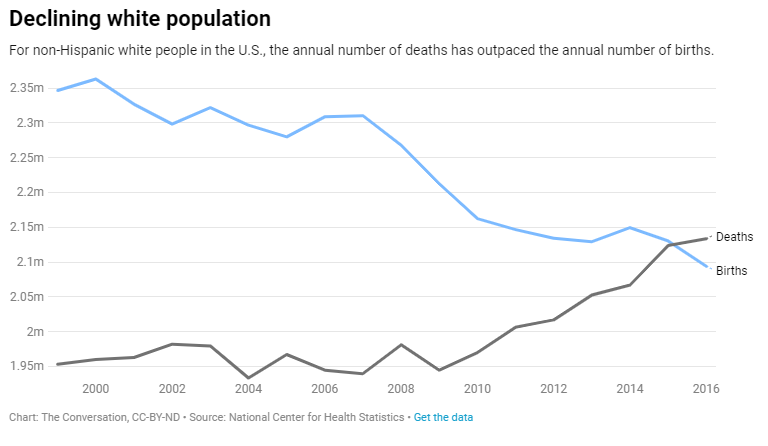I think the pandemic and rapid decline in health of the native population took them by surprise and now they are wildly dialing the controls - like panicked monkeys trying to keep a crashing Boeing jetliner in the air.
With most countries that have any immigrants anybody else would want being below replacement, every country will have to earn their immigrants. That means being competitive and having an immigration system that is something besides a wide open border. A wide open border is a sure way not to be competitive. We saw how Japan is doing it awhile back.
https://apnews.com/article/growth-popul ... ba5d7cdadeThe Census Bureau sees an older, more diverse America in 2100 in three immigration scenarios
Here’s a look at how the U.S. population is expected to change through 2100, using the medium immigration scenario.
2020s
By 2029, older adults will outnumber children, with 71 million U.S. residents aged 65 and older and 69 million residents under age 18.
The numeric superiority of seniors will mean fewer workers. Combined with children, they’ll represent 40% of the population. Only around 60% of the population that is of working age — between 18 and 64 — will be paying the bulk of taxes for Social Security and Medicare.
2030s
“Natural increase” in the U.S. will go negative in 2038, meaning deaths outpacing births due to an aging population and declines in fertility. The Census projects 13,000 more deaths than births in the U.S., and that shortfall grows to 1.2 million more deaths than births by 2100.
2050s
By 2050, the share of the U.S. population that is white and not Hispanic will be under 50% for the first time.
Currently, 58.9% of U.S. residents are white and not Hispanic. By 2050, Hispanic residents will account for a quarter of the U.S. population, up from 19.1% today. African Americans will make up 14.4% of the population, up from 13.6% currently. Asians will account for 8.6% of the population, up from 6.2% today.
Also in the 2050s, Asians will surpass Hispanics as the largest group of immigrants by race or ethnicity.
2060s
The increasing diversity of the nation will be most noticeable in children. By the 2060s, non-Hispanic white children will be a third of the population under age 18, compared to under half currently.
2080s
Under that medium immigration scenario, the U.S. population peaks at more than 369 million residents in 2081. After that, the Census Bureau predicts a slight population decline, with deaths outpacing births and immigration.
2090s
By the end of the 2090s, the foreign population will make up almost 19.5% of U.S. residents, the highest share since the Census Bureau started keeping track in 1850. The highest rate previously was 14.8% in 1890. It currently is 13.9%.

